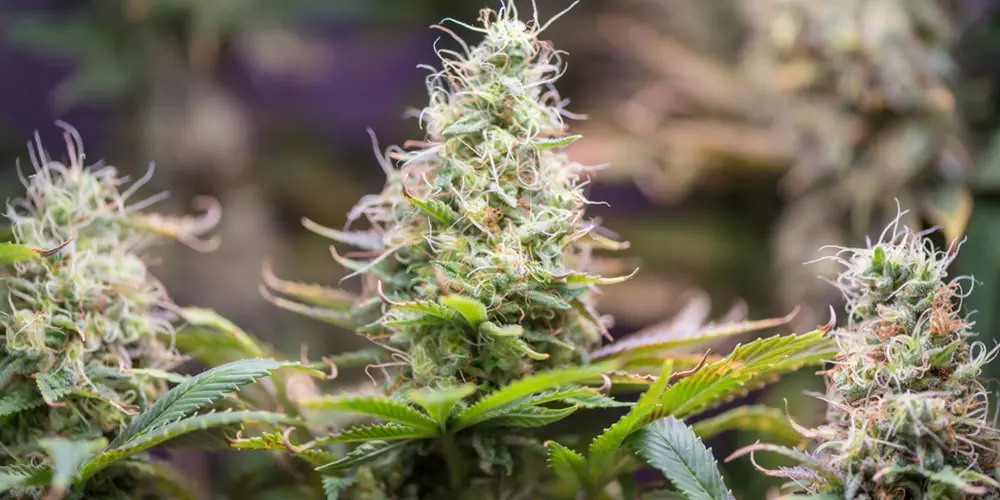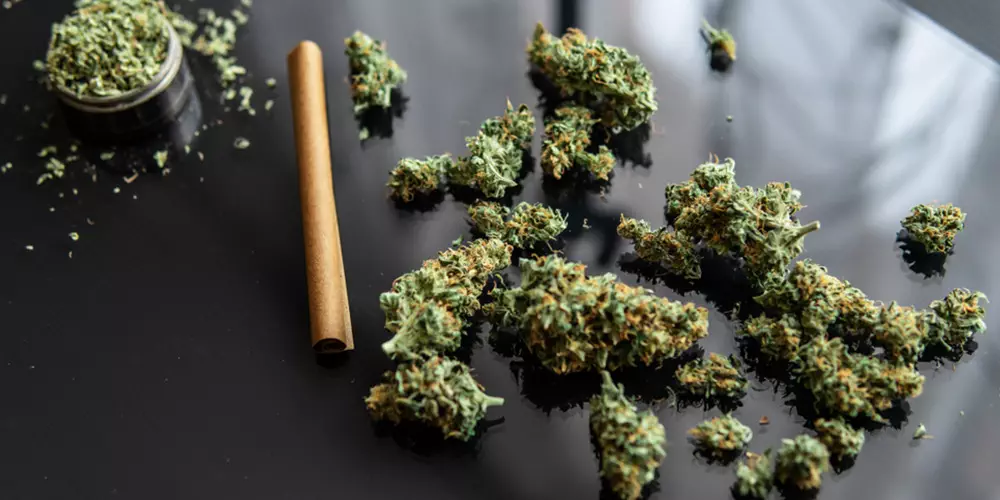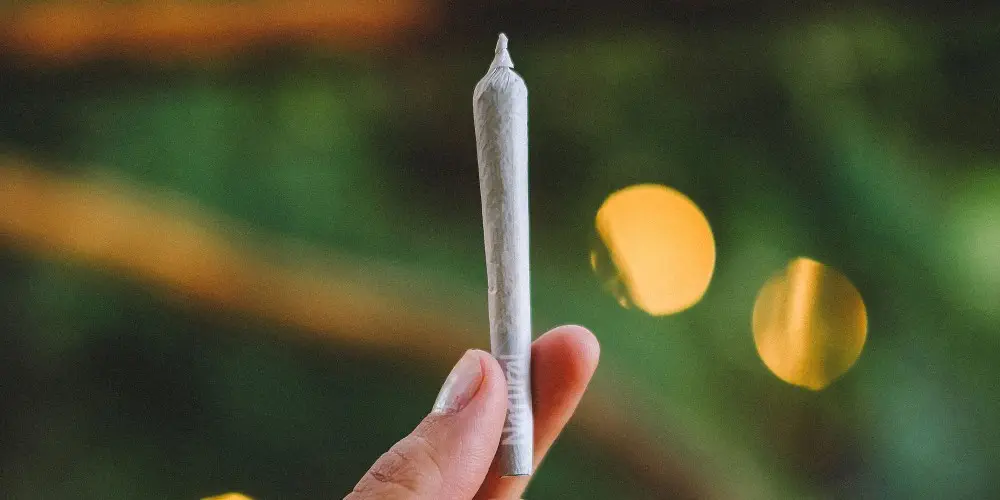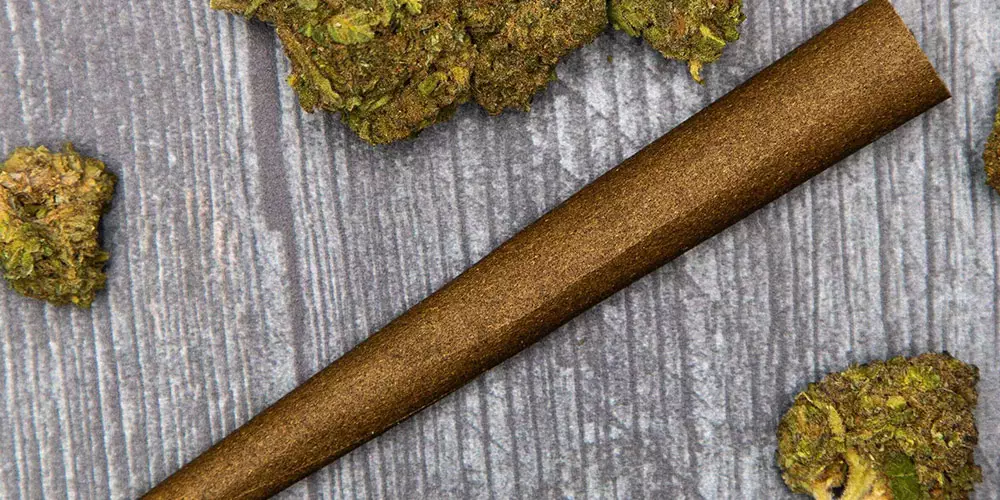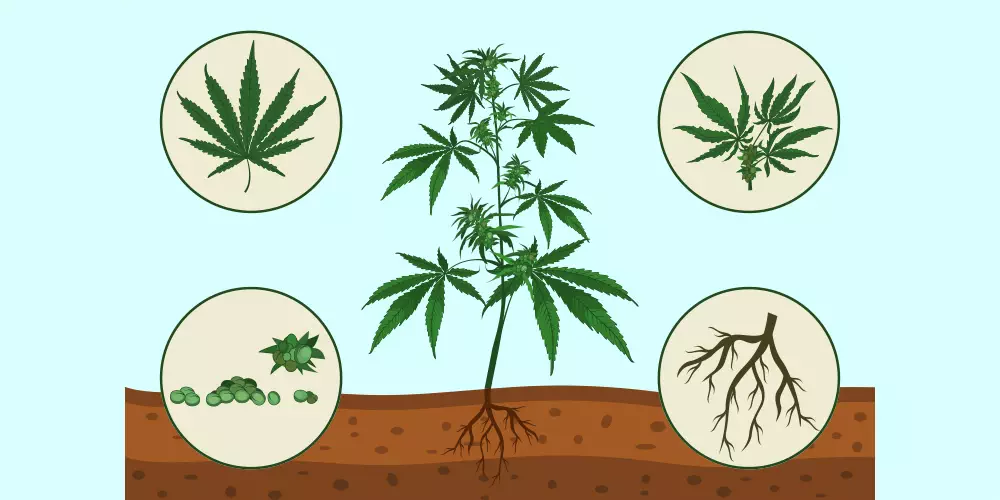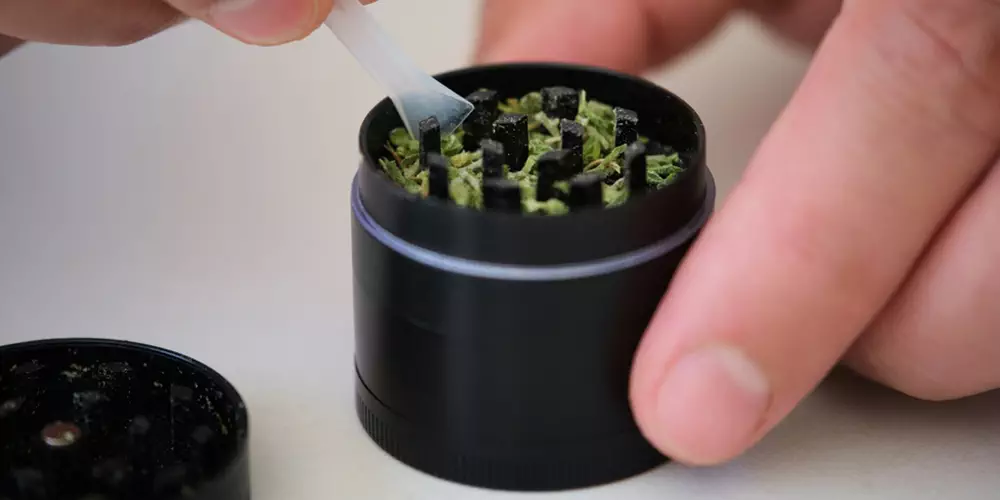Female cannabis plants play a crucial role in the world of cannabis cultivation and production.
They are highly valued for their ability to produce buds rich in cannabinoids,
This makes them the preferred choice for both recreational and medicinal cannabis.
Throughout their growth stages, female weed plants exhibit distinctive physical characteristics that differentiate them from their male counterparts. Let’s delve into the unique features of female cannabis plants, their importance in bud and cannabinoid production, and the different types of female plants available.
Physical Characteristics Throughout Growth Stages
Vegetative Stage

During the vegetative stage, female cannabis plants develop lush, green foliage with serrated leaves. They focus on growing taller and developing a strong root system to support future flowering. Unlike male plants, female plants tend to have a more bushy and dense appearance.
Pre-flowering Stage
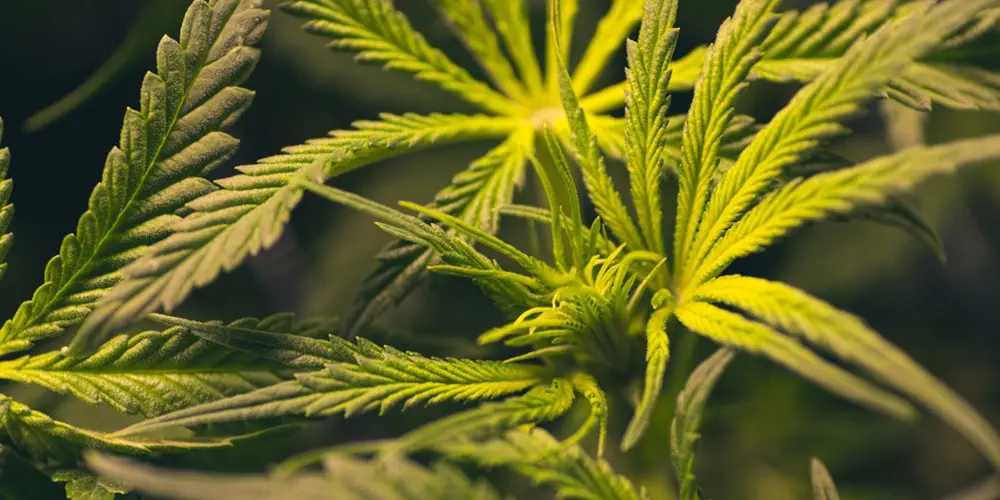
As female cannabis plants transition to the pre-flowering stage, they start showing pre-flowers or “pistils.” Pistils are hair-like structures emerging from the leaf nodes. These early signs help growers identify the sex of the plant. Female pre-flowers have a teardrop shape with white hairs, while male pre-flowers look more round and lack hairs.
Flowering Stage
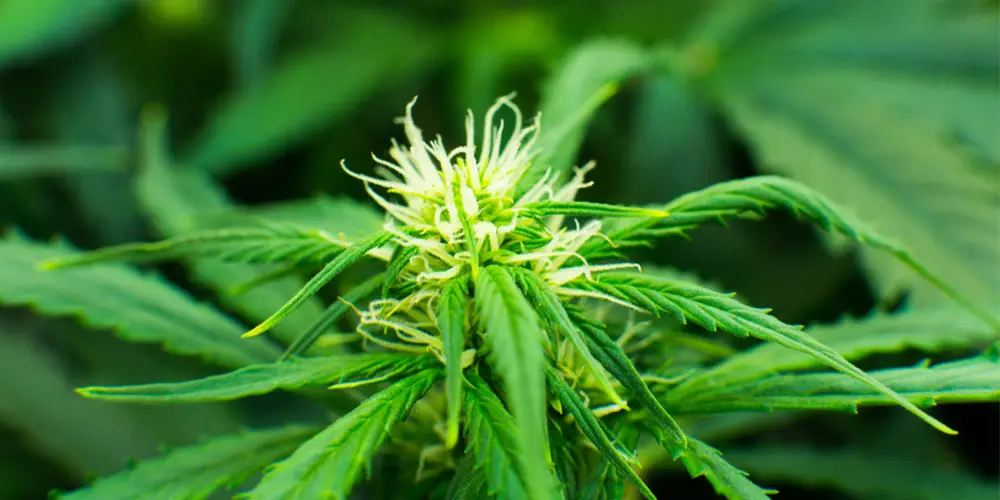
The flowering stage is the most crucial phase for female cannabis plants. During this period, they shift their energy towards bud production. Buds form at the nodes and internodes of the plant, developing into dense clusters coated in resinous trichomes. The pistils, which were previously white, darken and curl inwards as the buds mature.
Harvest Stage
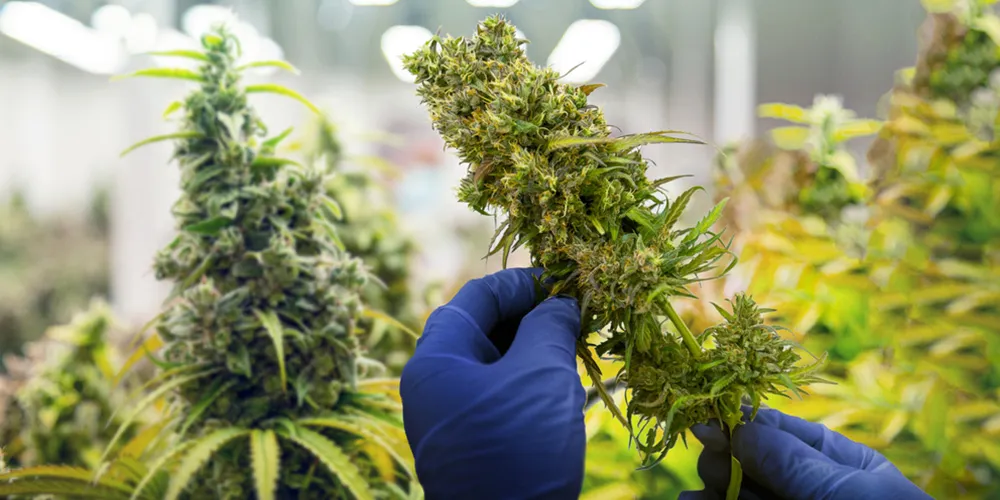
At the harvest stage, the buds of female cannabis plants are ready for collection. The once white pistils have now turned amber or brown, indicating peak cannabinoid production. Female plants continue to develop resinous trichomes, enhancing the potency and medicinal value of the harvested buds.
Importance of Female Plants in Bud and Cannabinoid Production
Female weed plants are of paramount importance in the production of buds and cannabinoids for several reasons:
Cannabinoid Production
Cannabinoids, such as THC and CBD, are primarily synthesized in the trichomes of female weed plants. These compounds are responsible for the plant’s psychoactive and therapeutic effects. By focusing on female plants, growers can maximize cannabinoid production, yielding potent and desirable cannabis strains.
Sinsemilla Production
Sinsemilla refers to seedless cannabis flowers with higher cannabinoid concentrations. Unfertilized female plants direct their energy towards resin and trichome production, leading to sinsemilla buds. This is a significant advantage for both recreational users seeking potency and medicinal users desiring consistent cannabinoid profiles.
Consistency in Cannabinoid Profiles
By cultivating female plants, growers can achieve consistent cannabinoid profiles across the crop. This is particularly important for medical cannabis users who rely on specific strains to manage their conditions effectively.

Different Types of Female Weed Plants
Photoperiod Varieties
Photoperiod female cannabis plants rely on changes in light cycles to initiate flowering. They require a specific light schedule, usually 12 hours of uninterrupted darkness, to trigger the transition from vegetative growth to flowering. This traditional cultivation method allows growers to control the flowering period and is often used by experienced cultivators and breeders.
Autoflowering Varieties
Autoflowering female cannabis plants are genetically programmed to flower automatically, regardless of light cycles. They reach the flowering stage after a certain period from germination, typically around 2 to 4 weeks. Autoflowering strains are popular among beginner growers and those seeking faster harvests since they can complete their life cycle in a relatively short time.
Benefits of Cultivating Only Female Plants
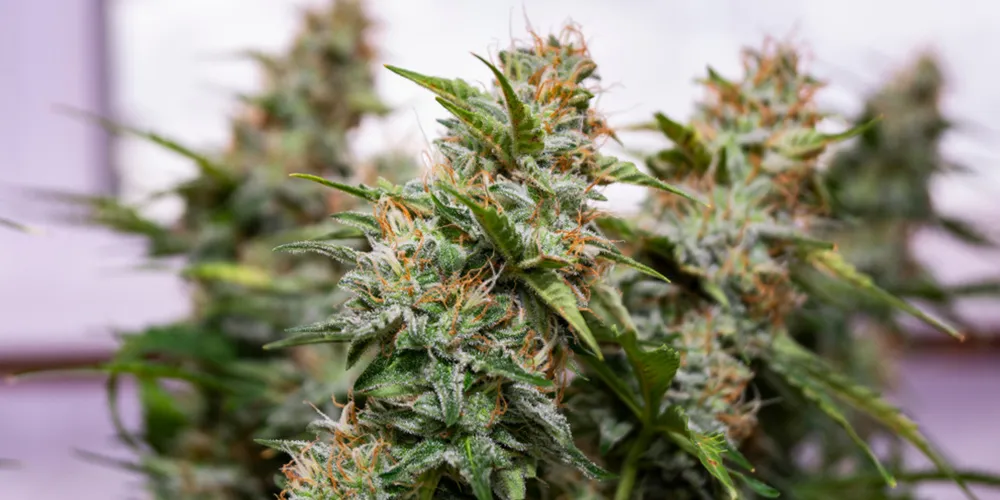
Cultivating only female cannabis plants offers numerous benefits, making it a preferred approach in both home gardens and commercial operations. By focusing solely on females, growers can maximize bud production and potency. Female plants direct their energy towards developing resinous flowers rich in cannabinoids and terpenes, ensuring a premium and potent end product. The absence of male plants in the garden eliminates the risk of pollination, leading to the production of seedless flowers, highly sought after for their superior quality and smoother smoke.
In commercial operations, growing only female plants provides consistency in the crop, as female plants exhibit uniform growth patterns and cannabinoid profiles. This allows growers to optimize cultivation techniques and deliver consistent, reliable products to the market, meeting consumer demands with precision.
Methods for Preventing Male Plants from Pollinating Females
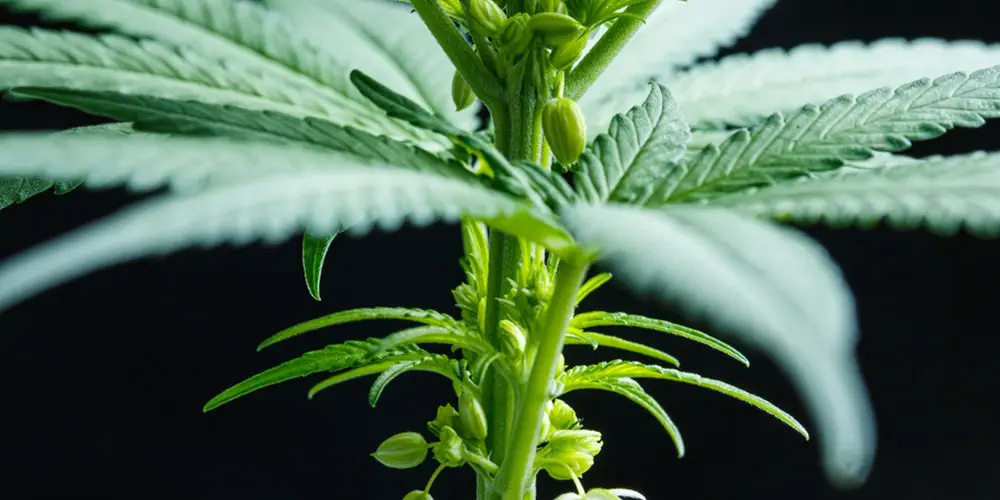
To prevent male plants from pollinating females and compromising the quality of the crop, regular inspections and removal are essential. Early detection of male plants is critical, as they start producing pollen before the females enter their flowering stage. Inspecting the garden frequently and carefully is vital to identify any male plants that may have emerged.
Upon identifying male plants, it is imperative to remove them promptly. Care should be taken during removal to prevent any accidental pollen release. Male plants can be discarded or relocated far away from the female plants to avoid any cross-pollination.
Another effective method for preventing male plants from pollinating females is to opt for feminized seeds or clones. Feminized seeds have a much higher chance of developing into female plants, eliminating the risk of males entirely. Additionally, using clones from known female plants ensures a consistent all-female crop, maintaining genetic purity and predictable results.
Conclusion
Female cannabis plants exhibit unique physical characteristics throughout their growth stages, making them invaluable for bud and cannabinoid production. Their ability to produce sinsemilla buds and consistent cannabinoid profiles enhances their importance in the cannabis industry. Furthermore, the availability of photoperiod and autoflowering varieties provides growers with diverse cultivation options, catering to different preferences and experience levels. Understanding and appreciating the significance of female weed plants empowers growers to cultivate premium-quality cannabis and meet the demands of the ever-evolving market.



